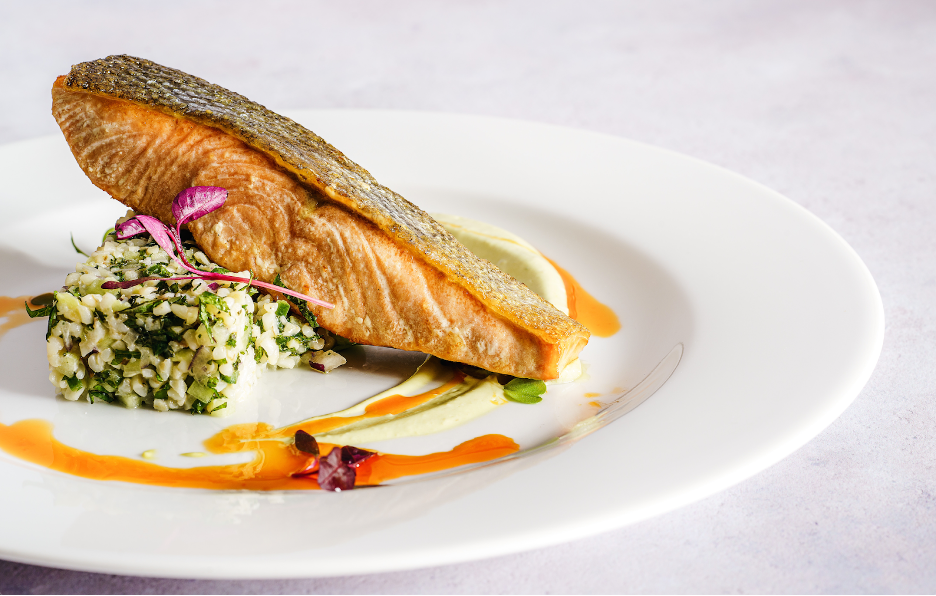If you know anything about me, you know I am passionate about my seafood. From exploring new ocean-friendly ways to feed our growing population, to creating go-to-market strategies for sustainable aquaculture products, to playing with new recipes, I think about seafood pretty much ALL of the time.
And because I live, breathe, and eat seafood, it’s important to me to make sure the dishes I cook are always being upgraded—without putting in a lot of extra effort. So I want to share with you my top five quick AND easy tips to improve your fish and seafood dishes.
Let’s get cooking!
Tip #1: Cook Fish Cold
You WANT your fish to be cold – cooking fish cold helps it keep its texture and moisture. If you’re thawing frozen fish from your Sea Pantry, try to do it in the refrigerator 8 to 12 hours before cooking. But don’t worry, if it slipped your mind to thaw in advance, all is not lost. You can always put frozen fish in cold (not warm) water for 3 to 5 minutes before putting it in your pan, grill, or oven to cook.
Tip #2: Marinades Cook Too
Marinades and seasoning rubs can give any fish or seafood dish some extra zing. Just keep in mind, they can be acidic or salty, and if fish is left sitting in them too long, it can cook before it gets to its heat source. To get your final dish done just right, only keep your fish in a marinade for 3 to 4 hours in the refrigerator before cooking.
Tip #3: Turn Up the Heat
If you cook fish or seafood on a surface that isn’t hot enough, it’s likely to stick, fall apart, and dry out—and no one wants that. To get your seafood sizzling smoothly, be sure your pan, grill, or oven are piping hot before cooking. If you’re using oil, use one with a high smoke point to help with heating.
Tip #4: Keep Turnover Low
I know part of the romance of cooking is getting to stir, flip, and turn your food like you see on your favorite cooking shows. After all, it’s fun to cook with panache! But, most fish and seafood needs to be turned only once. When you over-turn fish, its proteins cool down with every turn. And then you get chewy fish. So take a breath, step away from your pan, and enjoy the moments of peace you get while keeping turnover low.
Tip #5: Know Your Seafood
The most important thing you can do to improve your fish and seafood dishes is to improve your knowledge. Get curious about how your seafood came to your plate. Check out Monterey Bay Aquarium’s Seafood Watch recommendations before your shopping trips and look for the ASC and MSC logos. And be sure to check out my seafood brand recommendations in Basics for the Refrigerator and Freezer. After all, nothing tastes better than when you know you’re eating fish and seafood that is sustainably reared or caught!
There you have it—my recipe for seafood success. Use these top five tips to improve your fish and seafood dishes from the farm (or fishery) to your table. Happy cooking!

